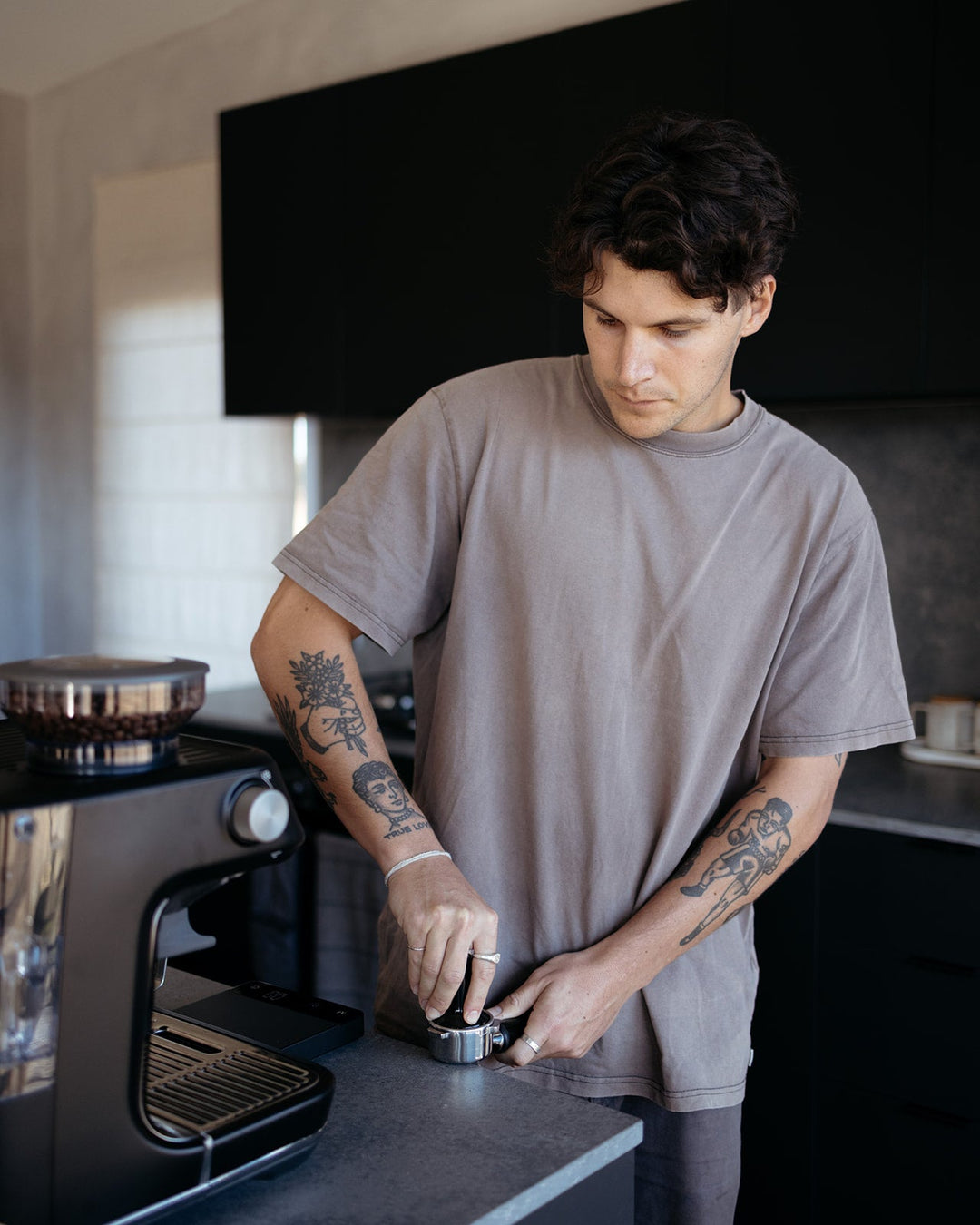Why SOE Single Origin Espresso Is Highly Rated Among Baristas
Why SOE Single Origin Espresso Is Highly Rated Among Baristas
Blog Article
Coffee Beans Uncovered: Finding the Keys of Coffee and Blended Coffee Beans
When you assume regarding coffee, what comes to mind? Is it the abundant aroma of espresso or the complexity of a well-crafted blend? Understanding the nuances of coffee beans can transform your experience.
The Origins of Coffee: A Historical Point Of View
Although coffee is now a staple in coffee society worldwide, its origins trace back to the early 20th century in Italy. You might be stunned to learn that the development of coffee was driven by a need for rate and effectiveness. In 1901, Luigi Bezzera patented the initial espresso equipment, intending to brew coffee faster than standard techniques. This advancement rapidly caught the focus of Italian coffee enthusiasts, causing the espresso bars we are familiar with today.
Recognizing Coffee Beans: Varieties and Qualities
When you consider coffee, it's important to identify the various bean varieties and their one-of-a-kind tastes. Each type brings a distinctive character to your mug, influenced by factors like roast levels. Recognizing these aspects can elevate your espresso experience significantly.
Coffee Bean Varieties
As you check out the world of espresso, you'll quickly uncover that not all beans are developed equivalent; each range brings its very own special tastes and features to your mug. One of the most prominent types include Arabica and Robusta. Arabica beans are recognized for their smooth, nuanced flavors and reduced high levels of caffeine content, making them a favorite among coffee lovers. On the other hand, Robusta beans load a stronger strike with higher caffeine and a more bitter taste, usually preferred in blends for their crema-enhancing high qualities. You could additionally come across specialized beans like Liberica and Excelsa, which supply unique profiles and are less typical. Each selection offers something different, so experimenting will help you find your best coffee.
Flavor Accounts Explained
Comprehending the flavor profiles of different coffee beans can raise your coffee experience. Each bean range offers distinct features that influence aroma, preference, and mouthfeel. For instance, Arabica beans often present a sweeter, more intricate taste with hints of fruit and flower notes, while Robusta beans often tend to be bolder, with nutty and earthy undertones.
When you explore single-origin beans, you might uncover unique regional flavors-- Main American beans might be citrusy and bright, whereas Italian blends typically deliver abundant, chocolatey notes.
Roast Degrees Effect
Roast degrees play a vital duty in shaping the taste and scent of espresso beans, affecting your total coffee experience. With light roasts, you'll find bright level of acidity and much more obvious fruity notes. As you relocate to tool roasts, you'll take pleasure in a well balanced account that showcases sweetness and intricacy. Dark roasts, on the other hand, frequently present rich, bold flavors with a smoky surface, but they can mask the beans' fundamental qualities. Understanding these roast degrees assists you pick the espresso that matches your taste preferences. Exploring with different roasts can bring about fascinating explorations, enhancing your recognition for coffee. Do not think twice to discover various roast levels and find your ideal cup!
The Art of Blending: What Makes Blended Coffee One-of-a-kind
What makes mixed coffee so interesting? It's everything about the art of incorporating beans from different beginnings, roast degrees, and flavor profiles. When you mix, you're not simply mixing; you're developing a harmonious equilibrium that highlights the toughness of each bean. You can try out various combinations to improve body, sweet taste, and acidity, leading to a brew that's richer and extra complex than a single-origin coffee.
And also, blending can help maintain consistency, supplying a reputable taste experience no matter of seasonal variations in beans. Whether you're a home or a barista brewer, understanding the art of mixing opens up a globe of creative thinking and flavor opportunities, making your coffee experience truly one-of-a-kind.
Taste Profiles: Tasting Notes of Espresso vs. Blended Coffee
Mixed coffee supplies a world of flavor opportunities, but when it comes to coffee, you're looking at a more concentrated experience. Espresso typically showcases strong, rich tastes with a thicker mouthfeel.
On the other hand, combined coffee offers a complicated tapestry of tastes. You can discover a selection of sampling notes, from nutty and sweet to floral and fruity. Each blend can use something one-of-a-kind, typically incorporating beans from different regions to create a balanced profile.
While espresso supplies a punch, mixed coffee invites you to enjoy the nuances. Whether you like the durable stamina of coffee or the complex tastes of combined coffee, each mug informs its very own tale, waiting on you to find.
Developing Techniques: Refining Your Coffee Shot
To achieve the ideal coffee shot, understanding the developing methods is crucial, as even small modifications can considerably impact the flavor and high quality. Start by utilizing fresh, premium coffee beans; grind them prior to developing here are the findings for optimum flavor. Go for a fine grind, about the consistency of salt, to ensure ideal extraction.
Next, pay attention to your water temperature level; it should be between 195 ° F to 205 ° F. Too warm or also cool can destroy your shot. Use about 18-20 grams of coffee for a dual shot, and tamp it uniformly with solid stress to develop an uniform puck.
Lastly, manage your removal time; go for 25-30 seconds. A longer removal can result in bitterness, while also brief can result in sour flavors. Exercise these methods constantly, and you'll refine your skills, achieving that abundant, full-bodied coffee shot you yearn for. Enjoy the trip!
The Function of Roast Levels in Coffee and Blended Coffee
After understanding the developing methods for espresso, it's time to consider just how roast levels affect the taste account of your coffee. The roast degree can considerably modify your espresso's preference, body, and scent. Light roasts have a tendency to highlight the coffee's beginning, offering intense level of acidity and fruity notes, while medium roasts equilibrium level of acidity and sweet taste, producing an all-around taste. Dark roasts, on the various other hand, bring out strong, abundant tastes with lower acidity, commonly creating delicious chocolate or smoky touches.

Exploring Sustainability: Moral Sourcing of Coffee Beans
When you pick coffee, you're not simply selecting a taste; you're deciding concerning the influence on farmers and the setting. Understanding Fair Trade practices, natural farming methods, and qualification standards can aid you support lasting coffee sourcing. Let's discover exactly how these factors add to a more moral coffee experience.
Fair Trade Practices
Fair Profession methods play a necessary function in guaranteeing that coffee beans are sourced ethically and sustainably. You support farmers that receive reasonable earnings and work in risk-free problems when you select Fair Profession coffee. This dedication to moral sourcing helps combat destitution and advertises area development in coffee-growing regions. You'll discover that Fair Trade qualification likewise encourages ecologically friendly farming methods, as manufacturers are incentivized to protect their land and sources. By opting for Fair Profession brands, you're not simply delighting in an abundant cup of coffee; you're making a positive influence on the lives of those who expand it. Your choice issues, and it connects you to a worldwide activity concentrated on justness and sustainability in the coffee industry.
Chemical-free Farming Techniques
As you have a peek at these guys check out the world of ethical coffee sourcing, natural farming techniques become a crucial component of sustainability. By choosing organic coffee, you support practices that prioritize soil health and wellness, biodiversity, and all-natural ecological communities. Farmers stay clear of synthetic chemicals and fertilizers, depending instead on natural garden compost and crop turning to boost soil fertility. This not just protects the setting however additionally enhances the quality of the coffee you take pleasure in. Chemical-free farming urges neighborhood wildlife and promotes a well balanced ecological community, lowering the possibilities of disease and parasites. In addition, it usually causes stronger, much healthier coffee plants, resulting in richer tastes in your cup. When you select natural coffee, you're making a conscious choice that benefits both the world and your palate.
Certification Requirements Explained
Understanding qualification standards is crucial for anybody interested in morally sourced coffee. These requirements, such as Fair Trade, Rain Forest Partnership, and USDA Organic, assurance that coffee is expanded under sustainable methods. You support farmers who stick to moral labor methods and ecological protection. when you select certified coffee.
Fair Profession qualification concentrates on providing reasonable incomes and functioning problems, while Rain forest Partnership highlights biodiversity and ecological community conservation. Next time you're at your local café or grocery shop, look for these tags, and really feel good knowing your coffee purchase favorably impacts neighborhoods and the environment.
Regularly Asked Inquiries


How Does Elevation Impact the Growth of Coffee Beans?
Elevation influences coffee bean development by affecting temperature level and environment. Higher altitudes typically produce denser beans with more complex flavors, while reduced altitudes can result in faster development yet much less flavorful results. You'll taste the distinction!
What's the Difference In Between Arabica and Robusta Beans?
Arabica beans are sweeter and a lot more intricate, while Robusta beans have a stronger, harsher flavor with greater high levels of caffeine material. You'll discover Arabica chosen for specialty coffees, whereas Robusta's typically used in immediate coffee and espresso blends.
Can Coffee Beans Go Poor or Lose Taste In Time?
Yes, coffee beans can spoil and lose taste gradually. If you store them poorly or keep them too long, they'll wither. Always maintain your beans in an airtight container away from light and moisture.
What Are the Health Advantages of Drinking Coffee?
Drinking espresso boosts your power, improves mental quality, and might lower the threat of particular conditions. It's rich in anti-oxidants, sustains metabolic process, and can improve state of mind, making it a valuable selection for your daily regimen.
Exactly How Does Water High Quality Impact Coffee Removal?
Water high quality considerably influences coffee extraction. It affects the solubility of tastes and oils, affecting taste and aroma. Utilizing filtered water can boost your coffee, making sure a pleasurable and balanced mug every time you brew.
Coffee Beans Uncovered: Finding the Secrets of Espresso and Blended Coffee Beans.
Comprehending the flavor profiles of different coffee beans can elevate your go to these guys coffee experience.Roast levels play a necessary duty in forming the taste and fragrance of coffee beans, affecting your total coffee experience (SOE).Combined coffee supplies a world of flavor possibilities, but when it comes to espresso, you're looking at a much more concentrated experience.After grasping the brewing techniques for espresso, it's time to contemplate how roast levels influence the flavor profile of your coffee
Report this page